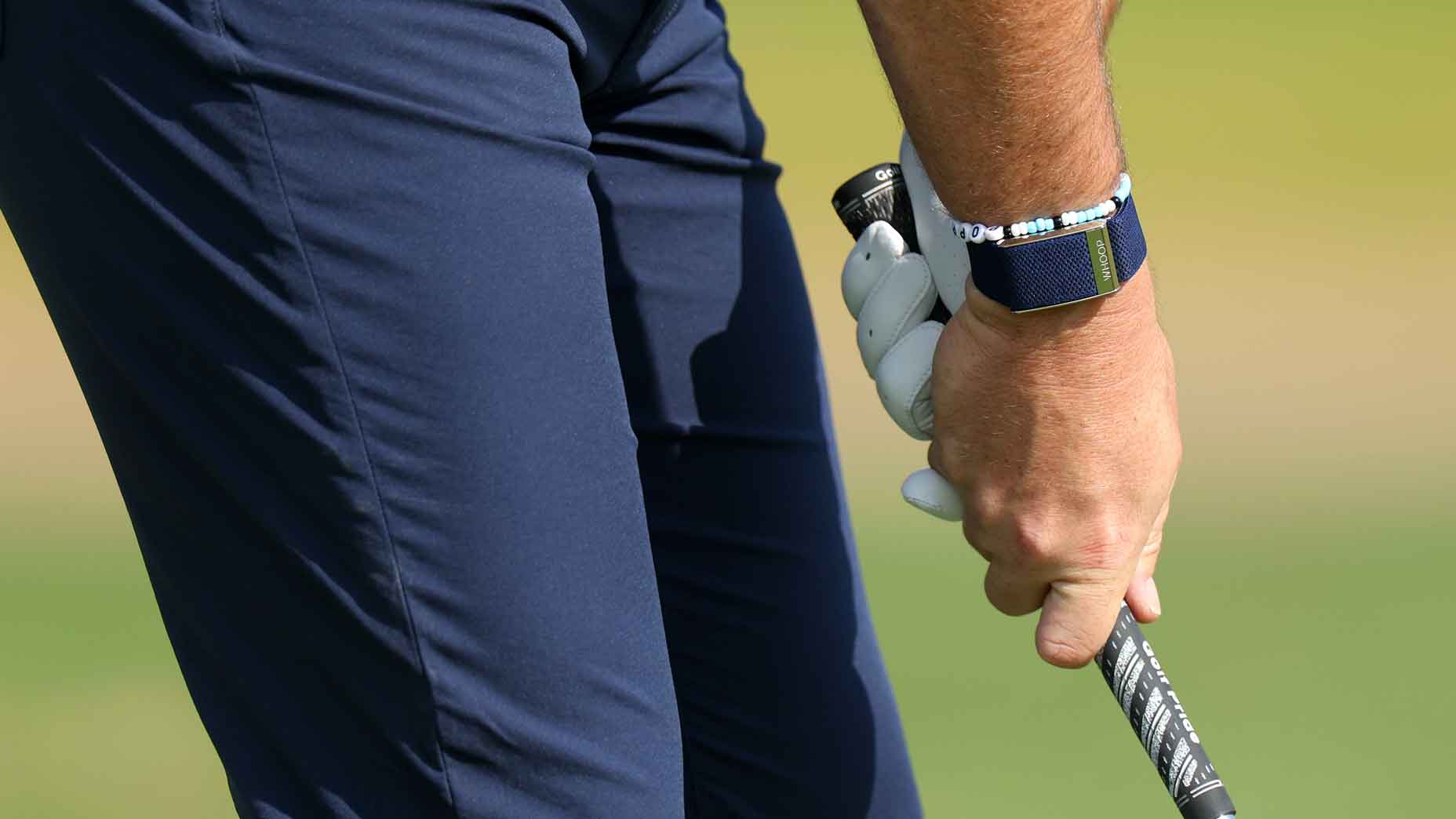
Could changing your grip make the difference in better play? It just might!
Getty Images
The way you place your hands on the golf club will directly influence what the golf ball does. That’s why it’s important to understand some basic golf grip fundamentals that will help go a long way in your overall improvement.
Below, I address some common grip fundamentals that every amateur should know about. From a stronger grip to a weaker grip — and plenty in between — these can help you identify how certain adjustments that may improve your swing.
So take a look below at some of my most important golf grip fundamentals to familiarize yourself with.
1. “Stronger”
Stronger means turning one or both hands away from the target, causing your thumbs to be more towards the back of the grip. A grip that is turned away from your target will tend to produce a more square to closed clubface, which promotes a draw or a hook; and less of a slice.
I often see confusion with the trail hand of this grip, where a golfer may want less slice, but they incorrectly turn the hand more towards the target. In this case, the clubface would be more open, and the ball would tend to fade or slice more.
So for a stronger grip, remember to turn both hands away from the target.
2. “Weaker”
A weaker grip means turning one or both of your hands towards the target, causing the thumbs to either be more centered on the grip or even on the target side of the handle.
This rotation of the hands will produce a more square to open clubface, leading the ball to either fade or slice more, while also helping correct an unwanted hook.
You can also adjust your grip to weaker or stronger to curve your golf ball on-demand.
3. Hole in your glove
A hole in your glove near the bottom of the palm is rarely due to a defective glove — although I certainly know many golfers who might like to believe this.
In fact, a hole in your glove is a sign of an incorrect grip.
You want to have your top hand completely on the grip of the club and not hanging off of the end. If you historically do this while holding the club, consider gripping down. Not only will you save some money on gloves, but you’ll have a more secure contact with much less slippage.
4. In the fingers
For newer golfers, holding the club properly in the fingers can be difficult to learn. So many of them want to grab and strangle the golf club, rather than have security without tension.
When holding your club properly in your fingers, your heel pad should rest on top of your club and your fingers, and your pinky should fully encircle the grip of the club. Be sure to avoid any gaps between any of your fingers.
This secure position allows you to hold the club without tension, which makes it easier to use your hands and wrists, thus releasing the club and producing straighter and farther shots.
5. Grip down or full length
When should you grip down and when should you hold the club full length? I think this can vary depending upon whether you’re in full swing or in the short game.
With a full swing, I believe you should generally hold your club full length to help you maximize distance and engage with the turf — unless you’re trying to intentionally limit distance or are hitting too many fat shots. If you tend to top the ball with full swings, I would suggest never gripping down.
In the short game, this varies.
For instance, the larger the swing (or further back you are from the green), the higher on the handle you want to be. However, gripping down on smaller swings are often more reliable, and can provide more accuracy and less power.
6. Grip type: Interlock
The interlock grip is where the index finger of the lead hand interlocks with the pinky of the trail hand. This is a nice way for the hands to feel unified, and, many times, is a better option for golfers with larger hands.
There is a downside to the interlock, however.
In some cases, in an effort to connect the hands from “web to web”, some players tend to turn both hands a bit too far under the club. This causes the hands to work against one another — because the lead hand is a bit too weak, and the trail hand a bit too strong.
7. Grip type: Overlap
The overlap grip is where the pinky of the trail hand rests on top of the space between the index and middle finger of the lead hand. This helps the hands feel unified and connected, but also allows them to be in their more natural and hanging positions.
8. Grip type: 10-Finger
The 10-finger grip places all the fingers onto the grip of the club, making the index finger of the lead hand rest next to the pinky of the trail hand.
For golfers with smaller hands, or those who want to maximize connection, this is a great grip to use. This is because of the slight separation of the hands, which makes it easier to release the club on the forward swing.
9. Thumbs
Having your thumbs on the grip of the club, and in the right location, helps with both stability and squareness of contact. Thumbs that aren’t on the club can increase movement, which may cause the club to twist — producing off-line shots.
In my opinion, both thumbprints should be on the club (and stay on the club) all the way through the finish.
Some golfers don’t need to do this, but, for recreational golfers, I think having the thumbprints in place — and staying in place — produces a more stable clubface. This only increases more distance potential.
10. Hold don’t squeeze
You’re not trying to choke the club, you’re strictly just holding it.
When golfers have tension in their hands, it will lead to tension in their wrists, forearms, elbows and shoulders. When this happens, it will cause extreme losses in speed and power.
It may also be helpful to understand that the grip is tapered, meaning it increases in diameter as it gets closer to the cap. This helps the club stay in your hands without the need for you to squeeze.
Having the proper grip size can be important as well, since grips that are too small will make it difficult to avoid the club from slipping. Grips that are too large inhibit release and wrist motion. This is the reason that larger grips may be used for putting, which helps a player avoid too much hand and wrist motion.
Although focusing on your grip may not sound like fun, understanding these golf grip fundamentals will help you hit the ball farther and straighter. So the key to improvement is understanding your own tendencies, and seeing if a subtle grip change is worth giving a shot.
All of our market picks are independently selected and curated by the editorial team.
If you buy a linked product,
GOLF.COM may earn a fee. Pricing may vary.







